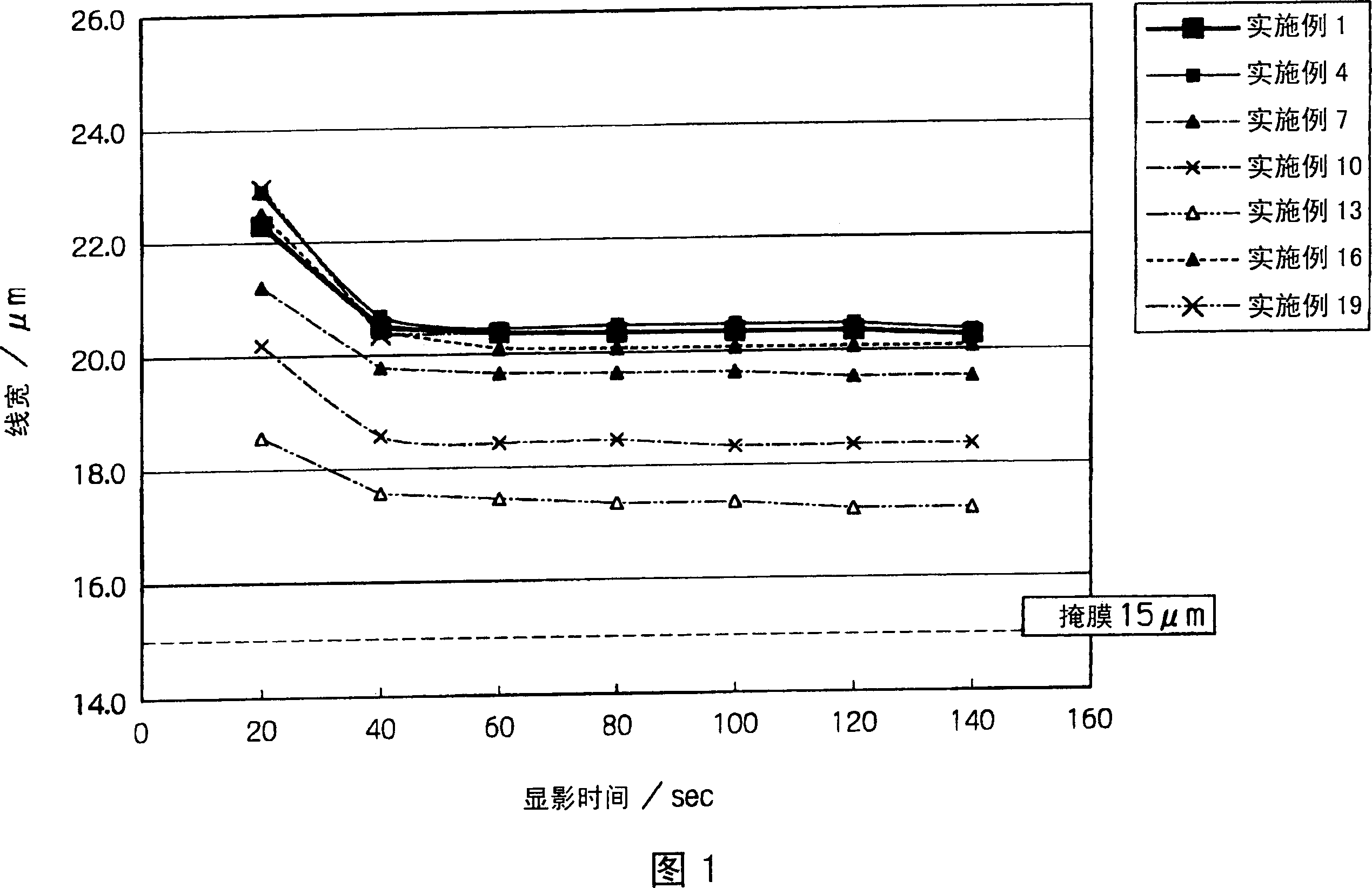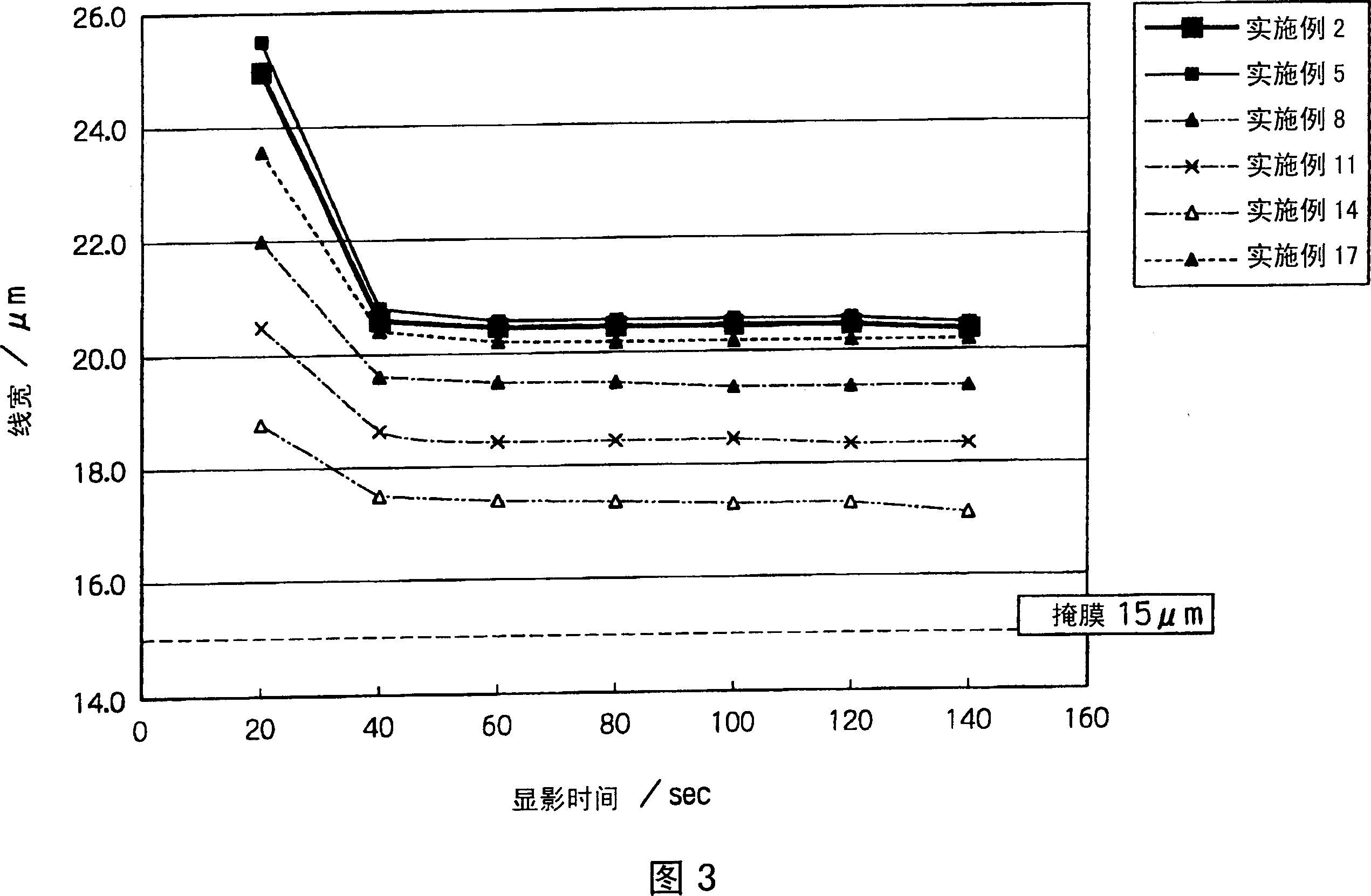Photo curable composition, color filter and method of producing thereof
A technology of photocurability and composition, which is applied in the field of color filters, can solve problems such as the easy reduction of development latitude, and achieve the effect of good fluidity, good development characteristics, quality defects and uneven display.
- Summary
- Abstract
- Description
- Claims
- Application Information
AI Technical Summary
Problems solved by technology
Method used
Image
Examples
Embodiment 1
[0184] "Preparation of Red (R) Photocurable Composition"
[0185]
[0186] The components of the following RED composition A were kneaded for 30 minutes with a kneader. After kneading, high-viscosity dispersion treatment was performed using a twin-roll kneader to obtain a dispersion.
[0187] -RED Composition A-
[0188] Pigment Red 254 29 parts
[0189] Pigment Yellow 139 6 parts
[0190] Benzyl methacrylate / methacrylic acid / methoxy-terminated polyethylene glycol acrylate (=75 / 15 / 10 (mass ratio)) copolymer (alkali-soluble resin, polyethylene glycol repeating unit: 4 , weight average molecular weight: Mw10000) propylene glycol monomethyl ether acetate solution (solid content: 50%) 22 parts
[0191] Dispersant (trade name: Disperbyk-161, manufactured by Bitsukuchemi Co., Ltd.) 2 parts
[0192] (30% solution of propylene glycol monomethyl ether acetate and butyl acetate mixed solvent)
[0193]
[0194] To the dispersion obtained by the above-mentioned kneading and disp...
Embodiment 2
[0217] "Preparation of Green (G) Photocurable Composition"
[0218] In Example 1, except having changed RED composition A, B, and C into following GREEN composition A, B, C, respectively, it carried out similarly to Example 1, and prepared the green (G) photocurable resin composition.
[0219] -GREEN composition A-
[0220] Pigment Green 36 28 parts
[0221] Pigment Yellow 150 14 parts
[0222] Benzyl methacrylate / methacrylic acid / methoxy terminated
[0223] Polyethylene glycol acrylate (=75 / 15 / 10 (mass ratio)) copolymer
[0224] (alkali-soluble resin, repeating unit of polyethylene glycol: 4, weight average molecular weight:
[0225] Mw10000) of propylene glycol monomethyl ether acetate solution (solid content: 50%) 20 parts
[0226] Dispersant (trade name: Disperbyk-161, manufactured by Bitsukuchemi Co., Ltd.) 4 parts
[0227] (30% solution of propylene glycol monomethyl ether acetate and butyl acetate mixed solvent)
[0228] -GREEN composition B-
[0229] Benzyl met...
Embodiment 3
[0248] "Preparation of Blue (B) Photocurable Composition"
[0249] In Example 1, except having changed RED composition A, B, and C into the following BLUE composition A, B, C, respectively, it carried out similarly to Example 1, and prepared the blue (B) photocurable composition.
[0250] -BLUE Composition A-
[0251] Pigment blue 15:6 16 parts
[0252] Pigment Violet 23 3 parts
[0253] Benzyl methacrylate / methacrylic acid / methoxy terminated
[0254] Polyethylene glycol acrylate (=75 / 15 / 10 (mass ratio)) copolymer
[0255] (alkali-soluble resin, polyethylene glycol repeating unit: 4, weight average molecular weight:
[0256] Mw10000) of propylene glycol monomethyl ether acetate solution (solid content: 50%) 20 parts
[0257] Dispersant (trade name: Disperbyk-161, manufactured by Bitsukuchemi Co., Ltd.) 4 parts
[0258] -BLUE COMPOSITION B-
[0259] Benzyl methacrylate / methacrylic acid / methoxy terminated
[0260] Polyethylene glycol acrylate (=75 / 15 / 10 (mass ratio)) cop...
PUM
| Property | Measurement | Unit |
|---|---|---|
| The average particle size | aaaaa | aaaaa |
| Boiling point | aaaaa | aaaaa |
| Boiling point | aaaaa | aaaaa |
Abstract
Description
Claims
Application Information
 Login to View More
Login to View More - R&D
- Intellectual Property
- Life Sciences
- Materials
- Tech Scout
- Unparalleled Data Quality
- Higher Quality Content
- 60% Fewer Hallucinations
Browse by: Latest US Patents, China's latest patents, Technical Efficacy Thesaurus, Application Domain, Technology Topic, Popular Technical Reports.
© 2025 PatSnap. All rights reserved.Legal|Privacy policy|Modern Slavery Act Transparency Statement|Sitemap|About US| Contact US: help@patsnap.com



